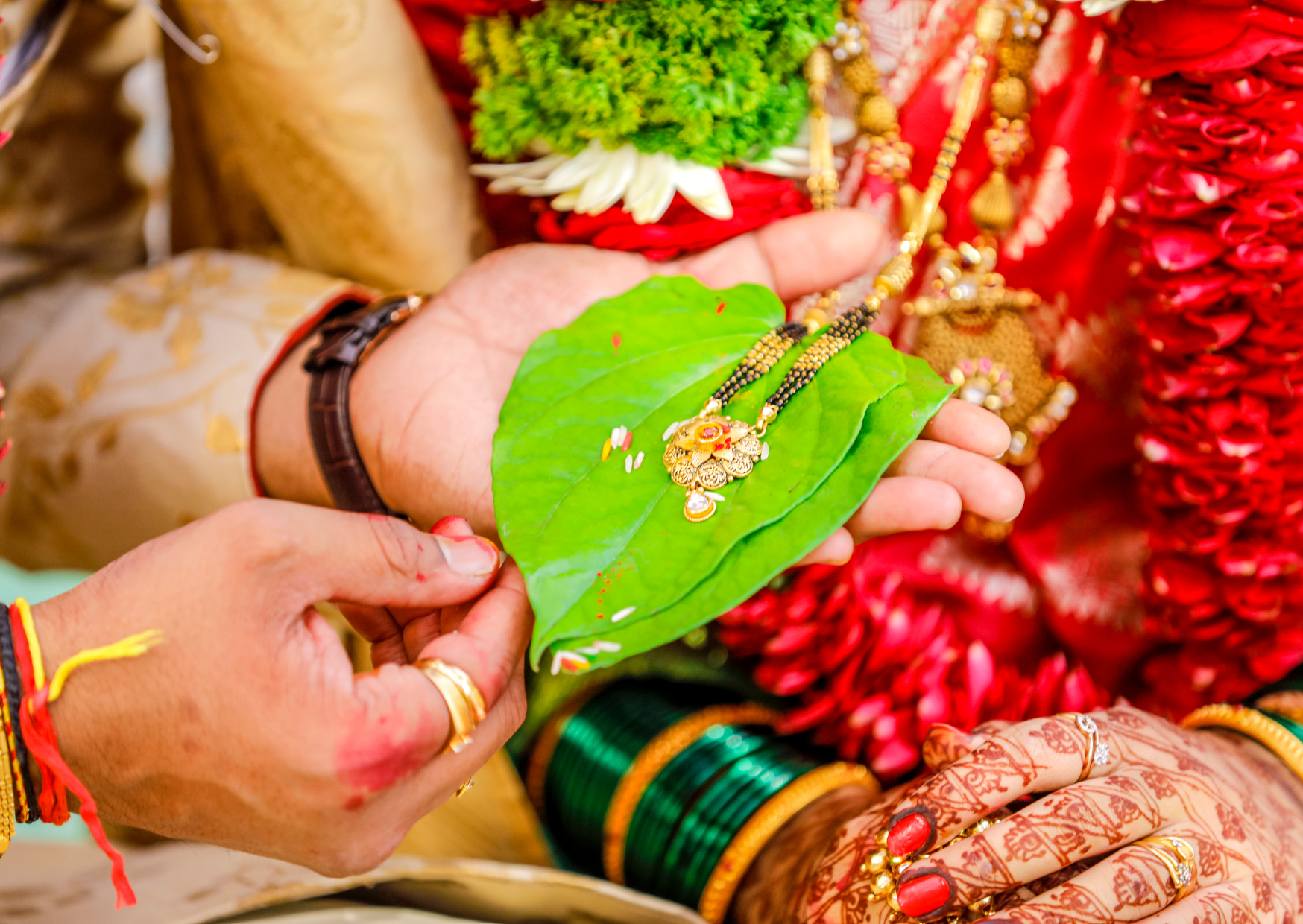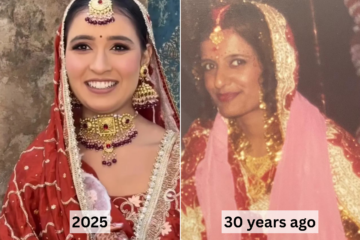Navigating Divorce: The Significance of Gold in South Asian Culture

When you think of an Indian bride, the first image that may come to mind is the way she is magnificently dressed and adorned with gold jewellery. Gold is an important aspect of Indian weddings and ceremonies, as well as Indian culture in general, as it is seen to have ‘ethnic and spiritual meanings’ (The NYU Dispatch). Brides may be gifted gold from her parents-in-law or her spouse, or it may be passed down to her from her own family.
The ownership of gold can come under question when a couple decides to divorce, posing a challenge that connects the emotional, cultural and legal aspects of it. To understand this challenge, it is first vital to explore the background of gold in South Asian traditions and everyday life, and then examine how gifted, and inherited, gold are considered during the divorce process.
Gold and South Asian traditions
Gold is a precious metal of high monetary value and is used as a symbol of status and wealth, but it also has sentimental value to many South Asians. Gold is present at every Indian wedding; the bride is attired in gold from head to toe in the forms of anklets, rings or bangles, and the couple may also receive gifts of gold jewellery or even bars of gold. However, the most significant piece of gold at an Indian wedding is the ‘Mangalsutra’. The ornament is a symbol of marriage and it is tied around the bride’s neck by the groom, with three knots, while the priest ‘recites mantras’. This marital act ‘signifies the groom and the bride are united’ and are responsible for looking after each other (Sampat, 2018).
Additionally, while South Asian girls already wear bangles before marriage, it is tradition for women to wear gold bangles after marriage as they symbolise ‘health, luck and prosperity’ and are seen as the symbol of ‘the complete woman’ (Virani Jewelers, 2022). Gold is not only worn on special occasions but plays a role in the woman’s daily life.
According to The Royal Mint (2022), ‘gold imported by India increased’ and ‘reached the highest monthly total in nearly two years’ in preparation for the wedding season. Weddings are not however the only celebrations where you will find gold, South Asians also give gold on auspicious days such as Diwali or Akshaya Tritiya.
The meaning of gold
Members of the Asian Single Parents Network CIC provided their opinions of what meaning gold has to them: one member described its ‘cultural and sentimental value, especially if passed on from generations, and a tradition in a family from both the groom’s and bride’s side’ while another highlighted it provides ‘security’. PR (in McKenzie, CNN, 2015) states that ‘the golden tradition dates back to a time when property laws favoured the groom’. Land and buildings would be passed on to sons and gold would be given to daughters so they had a share in the wealth which ties in with the aspect of security mentioned by one of the members.
While the groom may own land or buildings, when a bride leaves her childhood home, the only true security she has are her belongings. Gold is valuable and can make for great financial security, acting in the form of physical savings which could be needed in emergencies or as a means of financial independence. This may be important for future planning and when traditional means of finance is not available, for example when the bride is a stay at home mother.
The ownership of gold and divorce
The issue of gold ownership becomes complex in the event of a divorce, especially if the gold was gifted after the couple got married. While from a cultural and legal point of view the gold may be seen as belonging to the person who received it, such as the bride, issues can arise if the other party in the divorce, and their family, demand the return of the gold.
The topic of gold and its ownership during divorce proceedings was discussed during a ‘Faith and Family Law’ webinar hosted by law firm, Irwin Mitchell (2023). Sangeeta Kohli, Family Law Solicitor, highlighted that there is ‘still a prevalent issue of gold in South Asian communities’. She went on to explain that gifts should be ‘regarded as the property of the person they were gifted to’, which is most often the bride.
Kohli went on to describe the steps which can be taken when there is, or is not, an agreement in place. If an agreement is reached by the parties that some of the gold will be kept by one of them and some returned to the other party, this can be included within a ‘financial order’. If, however, there is a dispute around the gold, which could include ‘the value of the jewellery and its whereabouts’, the bride may face a legal burden in which she has to ‘prove she received it’, prove the intention of the receipt of gold and prove if it has been ‘unlawfully retained’ by the husband or his family, if that is the case.
Proving ownership of assets such as gold is a challenging process as a case is built using evidence which could include ‘wedding videos or photos showing what was gifted and when it was worn’. If the court has evidence of the jewellery ownership and its value, it can ‘make an order for a payment’ which should be received, however, it will also be ‘factored into all of the financial settlement discussions’ and the assets as a whole.
Inherited gold
Gold which has been inherited is not treated in the same way as gold which has been received as a gift. Inheritance of gold and other assets is not automatically included in the division of assets but can be considered, depending on when the inheritance was received and how it was used (divorce.co.uk, 2023).
The division of assets is not as straightforward as it may seem as assets may not be divided equally, depending on the circumstances of the case. The court will first take into consideration whether assets are ‘matrimonial’ or ‘non-matrimonial’.
‘Matrimonial assets’ are assets acquired during the marriage, as well as ‘non-matrimonial assets’ which became ‘matrimonial’ due to the way they were used such as inheritance used for the benefit of both the couple and their children. ‘Non-matrimonial assets’ are those which came from outside of the marriage and which were not shared between the individuals, such as gold jewellery inherited from one of their parents and only worn by the individual who received it. The court then decides if there is ‘sufficient matrimonial property to meet everyone’s needs’ or if some of the inherited assets need to be divided (Trim, 2021).
Inheritance and gifts of gold, as well as other assets acquired before marriage can be protected from divorce by drawing up a prenuptial agreement (before marriage) or a postnuptial agreement (after marriage) which outlines ownership of the couple’s financial assets, and which can save money during the divorce process.
Navigating gold ownership in divorce
The ownership of gold extends beyond materialism in South Asian culture as the gifts of gold have cultural and sentimental significance. Members of the Asian Single Parents Network CIC shared their personal experiences and thoughts surrounding gold ownership during divorce. Their comments portray the challenges which can be faced and how tradition interweaves with legal aspects.
One member reflected on his experience saying ‘gold jewellery is a gift during marriage but after divorce, as if by magic, my ex said it disappeared and apparently never existed’ which demonstrates the obstacles of proving the existence and the ownership of the gold in court could be faced by either of the parties.
Another member emphasised the simplicity of gold ownership in divorce and that the issues which arise are a shame ‘but sadly some people in some Asian families hold grudges and are vicious when separated, and even if some things like these make clear sense, they just don’t want to do it.’ This observation shows how family dynamics can additionally complicate matters and reveal additional emotional pressure on the bride during disputes.
Delving into the traditions of gold giving in South Asian families, one member described the significance of heirlooms and how they should be returned. ‘There is a ring which has been passed on for generations to the husband (damad) from the bride’s side which should be returned back to them when the couple separate and if there is a Mangalsutra from the groom’s side passed on, similarly it should be returned back to the grooms side.’ The significance of the heirlooms seems simple but provides complexity when matrimonial assets are considered during a divorce.
The exploration of South Asian culture and the legal aspects of gold ownership reveal how complex of a topic it is. Gold ownership does not only pose legal challenges but also cultural and emotional hurdles as the divorce process, traditions and family dynamics form an intricate web.
The significance of gold is undeniable but what is equally apparent is the need for legal safeguards such as a prenuptial agreement, to prevent the negative experiences like those which members of the Asian Single Parents Network CIC have suffered.
References:
Divorce.co.uk: https://www.divorce.co.uk/your-finances/inheritance
Kohli (2023) in Irwin Mitchell: https://www.youtube.com/watch?v=_CCBHMhfEKk&t=5s
Trim (2021) in Irwin Mitchell: https://www.irwinmitchell.com/news-and-insights/expert-comment/post/102h15s/inherited-wealth-on-divorce
Sampat (2018) in Sampat Jewelers: https://sampatjewelers.com/blog/importance-significance-mangalsutra/
The NYU Dispatch (2023): https://wp.nyu.edu/dispatch/women-and-jewelry-the-tradition-of-wearing-jewelries-in-hindu-culture/
The Royal Mint (2022): https://www.royalmint.com/invest/discover/invest-in-gold/indian-weddings-and-the-tradition-of-giving-gold/
Virani Jewelers (2022): https://www.viranijewelers.com/blogs/news/why-are-gold-bangles-important-to-indian-women


